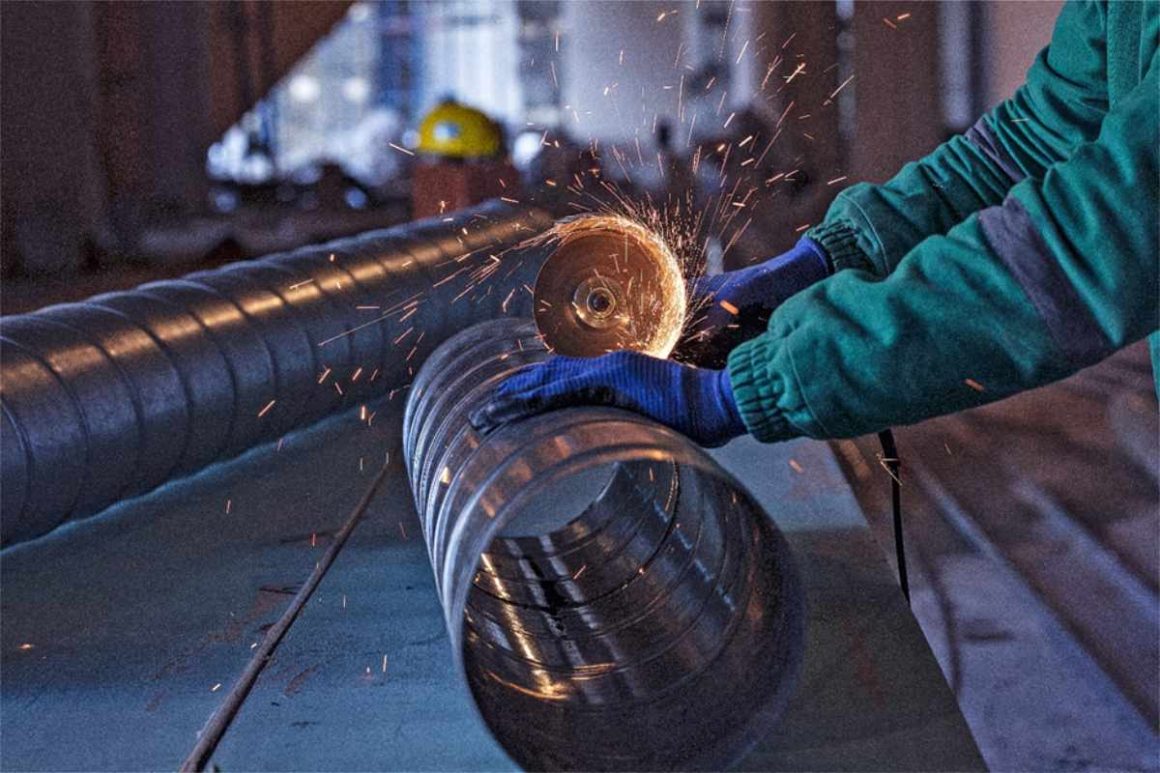Sheet metal fabrication involves manufacturing processes that turn sheet metal into functional parts. These manufacturing processes play a crucial role in making lasting and durable components ideal for almost all sectors of the economy, from aerospace to medical and beyond.
The sheet fabrication process involves cutting, punching, bending and joining metal sheets to produce products such as panels, brackets, enclosures and many more. Some of the metals manufacturers use to make these functional parts are stainless steel, aluminum, steel, copper and zinc. Below we’ll expound more on sheet metal fabrication processes.
Table of Contents
Steps Involved in Sheet Metal Fabrication
The goal of sheet metal fabrication is to convert sheet metals into workable parts. It involves several metal fabrication steps, including the steps listed here.
1. Cutting
The first step in sheet fabrication involves cutting, where force is used to remove or cut metal sheets. Cutting involves transforming raw materials into basic shapes that can bend or fold. Manufacturers can use different cutting methods, including waterjet, laser and shearing.
- Shearing. This is the most common technique for metal sheet cutting. In this cutting process, shear forces are applied on a sheet metal, where the force application results in a cut metal. Shearing facilitates the cutting of metal into curved or straight lines.
- Waterjet cutting. Waterjet cutting does not involve the use of heat to cut metals. Instead, it utilizes a high-pressure waterjet to cut the metal into curved or straight lines. Manufacturers use waterjet cutting for cutting thick metals.
- Laser cutting. Laser cutting is ideal for industrial-level projects. This cutting method allows for high processing times and high precision. It involves the use of high-powered laser beams to cut metals. Manufacturers use laser cutting for products that require intricate shapes.
2. Punching
This step is for those sheet metals that require punched holes or slots. It is a part of the cutting process and involves a punch press machine. In punching, manufacturers use punch presses to form holes in sheet metals.
3. Bending and Forming
After cutting the metal sheet, the next process in sheet metal fabrication is bending and forming. This step involves bending metal sheets into your desired shapes. Manufacturers use various methods, such as hydraulic sheet metal bending, roll bending and press brake bending.
- Press brake bending. This method uses a press brake to bend metal sheets. The press brake machine is long and narrow, making it easy for manufacturers to bend large metal sheets.
- Roll bending. Roll bending involves the use of roll bender machines to bend sheet metals into a circular arc. The device has three rollers that freely rotate around three parallel axes to create products such as cones, tubes and pipes.
- Hydraulic sheet metal bending. This method uses hydraulic presses to bend thick and large sheet metals. It bends metals that are too large or thick for the roll bender or the press brake.
4. Joining
In most sheet metal fabrication projects, a component is formed from several sheet metals. Therefore, manufacturers fuse different metal components in this step to achieve the desired end product. It can include using hardware fasteners, riveting, adhesives or welding.
5. Finishing
Finishing is the last step of sheet metal fabrication. It involves using finishing treatments to improve the unique properties of sheet metals, such as rust resistance. In addition, finishing ensures that the final component is commercially viable. Finishing can include several treatments, such as powder coating, painting and deburring.
- Powder coating. Powder coating involves an electric charge that makes dry powder fuse with sheet metal. It produces a smooth coating and a hard finish, which is tougher than standard paint.
- Painting. This process involves the use of a spray gun with oil-based paints to paint the surface of sheet metal. The main goal of this finishing is to protect the metal from rust.
- Deburring. Deburring helps to remove small imperfections on metal sheets, known as burrs. These burrs are sharp protrusions or edges created during the machining processes. Burrs can occur during waterjet cutting, laser cutting or forming.
Bottom Line
Sheet metal fabrication involves manufacturers manipulating and shaping metal sheets to form their desired parts. It comprises five main steps: cutting, punching, bending, joining and finishing. This fabrication process leads to the creation of custom metal parts suitable for every sector of the economy.


